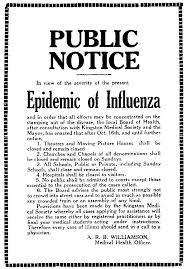This Day in History: September 14, 1918
Additional Date: September 14, 1918
The first cases of an unusually severe and deadly strain of influenza, popularly called Spanish Flu or 'Great Flu', were diagnosed on this date in Durban. This started the worst pandemic ever in South Africa. Of a total population of just over 6 million at the time, nearly half contracted the disease, while close to 140,000 died within a few weeks. The disease spread throughout the entire country and often whole families were ill or dying, with nobody left to care for them. Doctors and nurses did their best, but were too few to treat the ill. The Black and Coloured sections of the population were most severely affected, especially the mineworkers, who suffered dreadfully. The death-rate of Whites was also unusually high. Deaths were usually due to secondary bacterial infections, causing pneumonia. As this was before modern antibiotic treatment was available, there was no effective cure. The epidemic peaked in October. The virus caused the death of 25 to 40 million people throughout the world. An international, multi-disciplinary conference was held at the University of Cape Town (UCT) from 12 to 15 September 1998 to mark the 80th anniversary of the pandemic. During this conference attention was paid the causes, course and consequences of this catastrophe. It is currently generally accepted that the pandemic owed its origin to avian flu.
